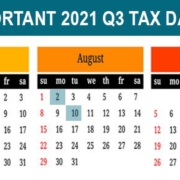ZERO CAPITAL GAINS RATE REQUIRES CAREFUL PLANNING
On December 22, 2017, The Tax Cuts and Jobs Act was signed into law. The information in this article predates the tax reform legislation and may not apply to tax returns starting in the 2018 tax year. You may wish to speak to your tax advisor about the latest tax law. This publication is provided for your convenience and does not constitute legal advice. This publication is protected by copyright.
One of the greatest benefits of the tax code is the special tax rates that currently apply to gain recognized from the sale of capital assets held for more than a year (long-term). The special tax rates apply to virtually all capital assets including stock, land, improved real estate, your home, and business assets in excess of the accumulated depreciation previously deducted. These special rates, which apply to net long-term capital gains (LTCG)* and qualified dividends are zero percent to the extent that your regular tax rate is 15% or less, 15% to the extent your regular tax rate is 25% through 35% and 20% for all other long-term capital gains. These rates, which apply only to non-corporate taxpayers, also apply for the alternative minimum tax.
This zero tax rate provides an extraordinary opportunity for a taxpayer to cash in on certain gains and pay no tax. This could be tax paradise for those who carefully plan their transactions.
The conventional strategy in the past was to offset as much of your gains as possible with losses from selling other assets in your portfolio. If you have an overall loss, then it is limited to $3,000 ($1,500 for married taxpayers filing separately), and any excess carries over to the next year. Keep in mind that losses from the sale of business assets are generally separately allowed in full in the year of sale, and not mixed with the losses from the sale of other capital assets. So with the benefit of the zero tax rate, a new strategy emerges: it may be more appropriate to take gains to the extent they would be taxed at zero percent.
What this zero tax rate means to you is that there is no tax on your long-term capital gains and qualified dividends to the extent that your regular tax rate is 15% or less. Remember that the gain and dividends themselves add to your income, impact income-based limitations, and may possibly push you into a higher regular tax bracket, so it is a balancing act to take advantage of this zero rate. Of course, you can also use losses to offset the gains, but you should only have enough losses to keep the gain within the zero tax rate.
The zero tax rate applies to the amount of your taxable income below the 25% tax bracket. For 2017, this “breakpoint” is the “top” of the 15% bracket and is:
- $37,950(up from $37,650 in 2016) for single taxpayers and married taxpayers filing separate returns;
- $75,900(up from $75,300 in 2016) for married taxpayers filing joint returns and surviving spouses; and
- $50,800(up from $50,400 in 2016) for heads of households
- Thus, the amount of your adjusted net capital gain taxed at 0% is:
(2) Your “other” taxable income (taxable income reduced by adjusted net capital gain).
The following issues may also come into play when planning your capital gains and losses strategies:
(2) By election, long-term capital gains can be used to increase the amount of investment income when figuring the investment interest deduction, but then aren’t eligible for the lower capital gain tax rates;
(3) Losses from selling personal-use capital assets, such as your home or auto, are not deductible and cannot be used to offset gains, and
(4) You may have short- and/or long-term capital losses from a prior year to account for. Also take into consideration how your state taxes capital gains; most do not have a 0% LTCG rate, and many do not have any special rates for capital gains.
Please give our office a call so that we can help you develop a strategy that will suit your unique situation.
* Net capital gain is generally the excess of net long-term capital gains over net short-term capital losses, subject to certain netting rules. However, the zero tax rate doesn’t apply to collectibles gain or gain taxed on sales of certain small business stock, both taxed at a maximum rate of 28%, or to unrecaptured Sec. 1250 (depreciation) gain, which is taxed at a maximum rate of 25%.







Leave a Reply
Want to join the discussion?Feel free to contribute!